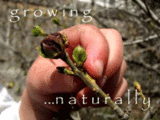It's a pretty intent friend of ours -- it's all over our yard, and is even visiting us up by the main door in spite of brickwork and sparse soil.

Mullein also goes by the names Aaron's rod, blanket leaf, candlewick, flannel flower, feltwort, mullein dock, old man's flannel, shepherd's club, velvet dock, hags tapers, clot, doffle, graveyard dust, Jupiter's staff, torches, or velvet plant. Since "dock" refers to any really broad leaf, and this is clearly a velvety plant, I like the velvet dock name best!
It's a biennial, which means it takes two years to complete its life-cycle from seed to seed. It will take a while to spread, I guess.
Generally, mullein likes fields, pastures, and clearings where it can get plenty of sun without too much competition. It grows pretty tall -- as much as three feet tall in our yard. It flowers from June to September.
Mullein, or velvet dock, is ruled by Saturn and its element is fire. It is dedicated to Jupiter. You can use both the flowers and the leaves medicinally.
One friend calls this "outdoor band-aids" because you can crush the leaves and hold them over insect bites, scratches, scrapes, and other minor injuries, and they'll stop bleeding and feel better pretty quickly.
A tea made from the flowers reduces pain and makes it easier to sleep. A tea or infusion from the leaves can help with coughs, hoarseness, and tummy upsets. If you boil the flowers and inhale the steam, it can relieve respiratory complaints. Steep the leaves in hot vinegar to make a wash for skin problems and wounds.
Put a few leaves of mullein in your shoe when you need to avoid catching a cold, and wear it on your clothes when you hike in untamed wilderness to keep from coming to the attention of wild animals. Make a "dream pillow" containing the leaves to ward off nightmares, and hang mullein plants it in doors and windows and carry it for protection from ill-will.
Yeah, mullein is a pretty good friend. I'm glad there's a lot of it here.












It is also good as an infusion for coughs. For a child a little bit goes a long way, I've used as little as one half of a dried leaf crushed in about a half cup of boiling water. Sweeten generously. It seems like it works as a cough suppresant. That's been our experience anyway. I've also seen it used as a steam (breathing in the steam) for asthma.
ReplyDelete